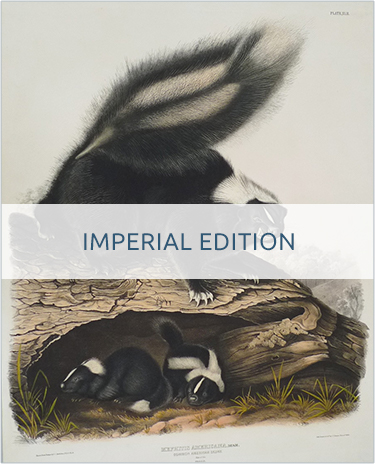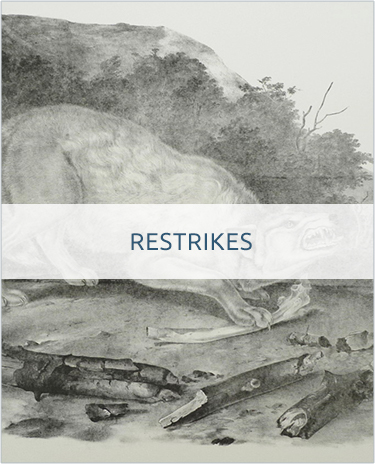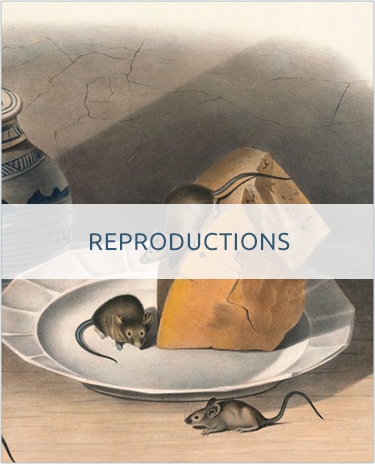 Even before the completion of The Birds of America, Audubon began to think about where next to apply his talents. Combining artistic with scientific accomplishment, the folio edition of The Viviparous Quadrupeds of North America must be set in context to appreciate its impact. The four principals, Audubon, John Bachman, John Woodhouse Audubon, and Victor Gifford Audubon, carried the project to completion in the face of personal, technical, and logistical difficulties, any small portion of which could have easily derailed the project. It is hard to imagine the project succeeding without the unique contribution of any of these four people, or without the assistance of Bachman’s sister-in-law (later wife) Maria Martin.
Even before the completion of The Birds of America, Audubon began to think about where next to apply his talents. Combining artistic with scientific accomplishment, the folio edition of The Viviparous Quadrupeds of North America must be set in context to appreciate its impact. The four principals, Audubon, John Bachman, John Woodhouse Audubon, and Victor Gifford Audubon, carried the project to completion in the face of personal, technical, and logistical difficulties, any small portion of which could have easily derailed the project. It is hard to imagine the project succeeding without the unique contribution of any of these four people, or without the assistance of Bachman’s sister-in-law (later wife) Maria Martin.
The Audubons were responsible for the artwork, John James Audubon and John Woodhouse Audubon each contributing about half of the animals, and Victor Gifford Audubon providing most of the backgrounds. John Bachman provided the scientific knowledge, and perhaps most importantly, scientific legitimacy because of his preeminence as a naturalist. He provided the scientific names of the animals (included on the plates) and was the author of the 3-volume letterpress, completed with assistance from Maria Martin and Victor Audubon.
Although Audubon traveled up the Missouri River to Fort Union (near the mouth of the Yellowstone River) to collect and study mammals, he was rapidly aging and could not work as he once had. Bachman was disappointed by the paucity of data to come out of the trip, and was further frustrated by the Audubons inability to supply him with needed references and information. When it was clear that more field work was necessary, John Woodhouse went to Texas to study southwestern animals, and then went to Europe to fill some of the remaining holes by drawing specimens from collections there.
Although the project was brought to completion without the figuring of many of the mammals Audubon and Bachman had once hoped to include, both plates and letterpress met with critical acclaim. The publication of the Viviparous folio and the accompanying letterpress was considered an important event in American natural history, and for many years The Viviparous Quadrupeds of North America was considered a keystone work, although it was perhaps more successful artistically than scientifically. It is difficult to appreciate today the breakthrough represented by this ambitious effort to catalogue the vast variety of animals of the North American continent.




